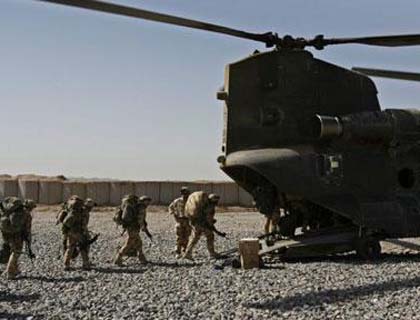WASHINGTON - His administration has succeeded in reversing Taliban's momentum, US President Barack Obama has said, hinting at the withdrawal of 33,000 troops from Afghanistan by next year.
"We have seen great progress in our fight against Al Qaeda; we have reversed the Taliban's momentum and we continue to see progress in training Afghan National Security Forces," Obama said in a letter to Congress on Friday. Accompanying the report on Afghanistan and Pakistan, the letter said: "This will allow us in the coming year to fully recover the 33,000 US troop surge I announced at West Point in December 2009.
"Beyond that change, we continue to implement the strategy and do not believe further modifications or adjustments to the metrics, resources, or authorities are required at this time. Huge challenges remain, and this is the beginning — but not the end — of our effort to wind down this war," he added.
In the 25-page unclassified section of the report, obtained by Pajhwok Afghan News, the White House said Afghan National Security Forces' performance had improved slightly during this quarter.
The steady progress continued to depend on ISAF support and was concentrated primarily in Helmand, Kandahar, Kunduz and Parwan provinces. However, uneven development in personnel, leadership and logistical capacity limited progress even in these provinces, it said.
ANA recruitment continues to exceed goals, and end strength in March 2011 was 159,363 personnel – well over the 154,988 goal. In March, ANA schools were filled to 92 percent capacity with 21,635 of 23,593 available seats filled. This rate was up two percent over the previous quarter.
During the reporting period of April and June, the White House said security incidents rose by 21 percent over the previous quarter. However, this increase was not uniform across regions. In the first quarter, 92 percent of security incidents occurred in RC-East, RC-South, and RC-Southwest. Security incidents decreased by 18 percent in RC-Southwest, increasing in RC-South and RC-East by 38 percent and 75 percent respectively. During the reporting period of April and June, the White House said security incidents rose by 21 percent over the previous quarter. However, this increase was not uniform across regions.
In the first quarter, 92 percent of security incidents occurred in RC-East, RC-South, and RC-Southwest. Security incidents decreased by 18 percent in RC-Southwest, increasing in RC-South and RC-East by 38 percent and 75 percent respectively.
This decrease in security incidents in RC-Southwest from the winter to the spring was unusual and demonstrated effectiveness of the ISAF main effort, while the increase in RC-East was considerably higher than expected, it said.
The White House said the overall capability of the ANSF increased since November 2009, as quantity has gone up from 193,000 to 302,000, and ISAF is on track to achieve the US and internationally agreed upon 352,000 force size by October 2012.

